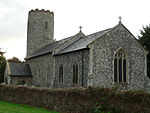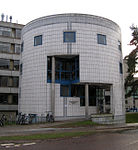Norwich Research Park
Norwich Research Park is a business community located to the southwest of Norwich, Norfolk, in East Anglia, England close to the A11 and the A47 roads. Set in over 230 hectares of parkland, Norwich Research Park is home to over 12,000 people, including 3,000 researchers and clinicians with an annual research spend of over £130 million. Norwich Research Park is a partnership between the University of East Anglia, the Norfolk and Norwich University Hospital, four independent world-renowned research institutes, namely the John Innes Centre, the Quadram Institute and the Earlham Institute, (all strategically funded by the Biotechnology and Biological Sciences Research Council BBSRC) and The Sainsbury Laboratory linked to the Gatsby Charitable Foundation. The focus of the Norwich Research Park is on creating and supporting new companies and jobs based on bioscience, in 2011 the Government awarded BBSRC £26 million to invest in Norwich Research Park. Norwich Research Park is a member of the UK Association of Science Parks UKSPA
Excerpt from the Wikipedia article Norwich Research Park (License: CC BY-SA 3.0, Authors).Norwich Research Park
Colney Lane, South Norfolk
Geographical coordinates (GPS) Address External links Nearby Places Show on map
Geographical coordinates (GPS)
| Latitude | Longitude |
|---|---|
| N 52.623894 ° | E 1.223946 ° |
Address
Norwich Research Park
Colney Lane
NR4 7RQ South Norfolk
England, United Kingdom
Open on Google Maps








